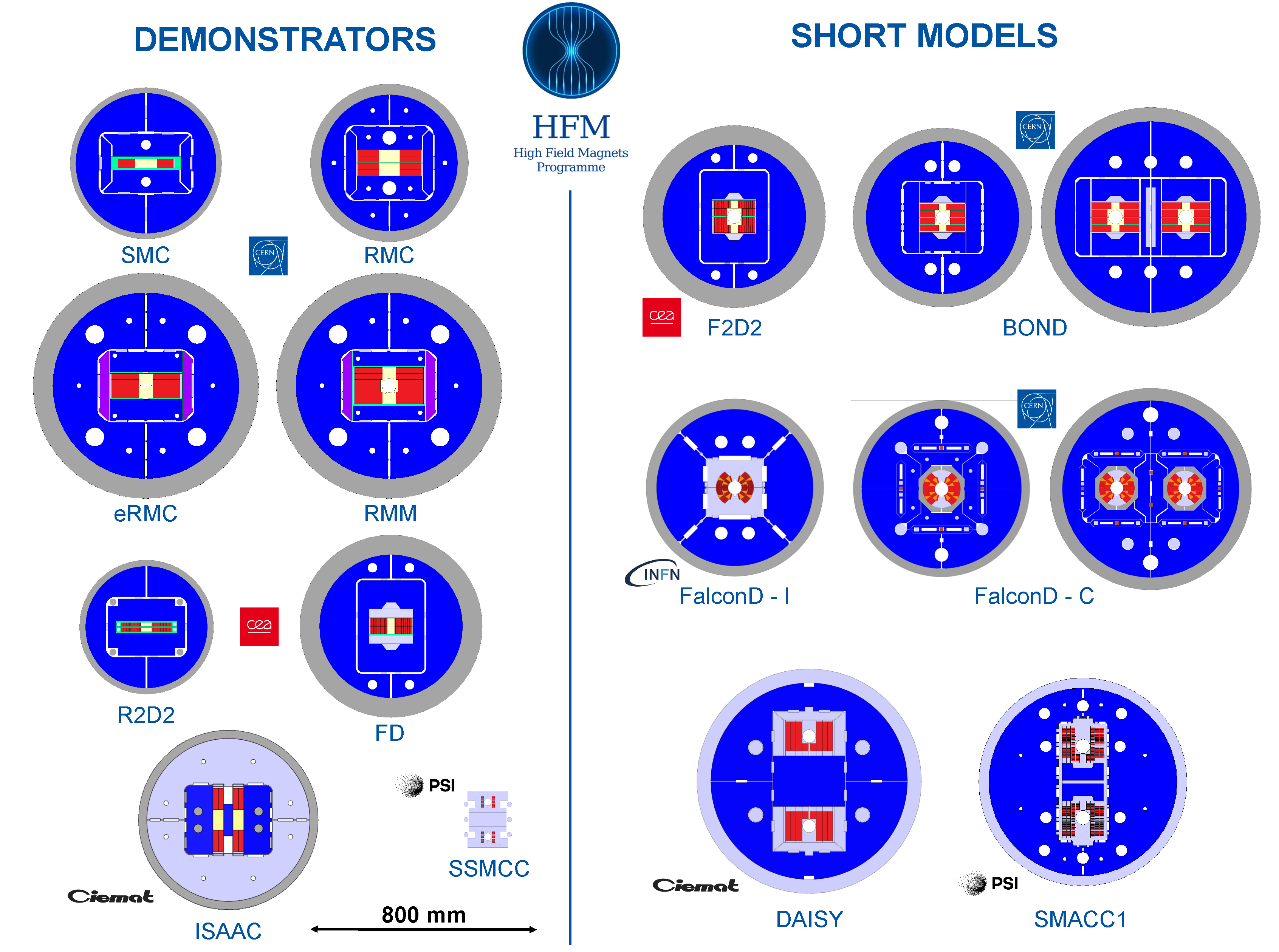About HFM
The 2020 update of the European Strategy for Particle Physics (CERN/3493/C/Rev) has identified a clear and immediate need for a reinforced R&D on advanced accelerator technologies, and in particular high-field superconducting magnets, including high-temperature superconductors.
The High Field Magnets R&D (HFM) Programme is the response that CERN has initiated, in collaboration with National Laboratories from the Member States and Associate Member States and linking possibly beyond to ongoing worldwide efforts, particularly in the US and Japan.
The HFM Programme – broad goals are:
- Develop an Nb3Sn accelerator dipole with 14 T operational field for FCC-hh, giving an energy of 85 TeV c.o.m., with a focus on sustainability, cost versus performance, and large scale production
- Explore the HTS magnet technologies for accelerator applications in the range from 14 T up to 20 T
- Promote the required developments for superconductors
- Highlight the innovative of high field magnets developments, both for particle physics instruments different from FCC, and for societal applications
Reference documents:
1. High Field Magnet Programme - European Strategy Input, March 2025
2. FCC Integrated Programme Stage 2, The FCC-hh (chapter 10.4 on magnets, pages 533-546), input for the European Strategy for Particle Physics (2025)
3. Update of the European Strategy for Particle Physics, June 2020, CERN-ESU-013
4. Deliberation Document on the 2020 Update of the European Strategy for Particle Physics, 5 March 2020, CERN-ESU-014 - EDMS 2477846
HFM Gallery:

Cross-sections of the Nb3Sn dipole magnets (short models and demonstrators)
Non-invasive method to investigate the internal structure of high-performance Nb3Sn wires combines X-ray microtomography with machine-learning. Courtesy UniGE.
Batch vacuum coating equipment for the KIT CERN Collaboration on Coated Conductor KC4.
RMM1 flat-racetrack magnet during loading operation. The magnet achieved 16.4 T in the central cavity. Courtesy of CERN MSC.
E-CLIQ device, designed for implementation in a SMC11T coil (left), simulated current oscillation in the E-CLIQ unit (middle), and simulated temperature rise in the coil (right). Courtesy CERN MPE group.